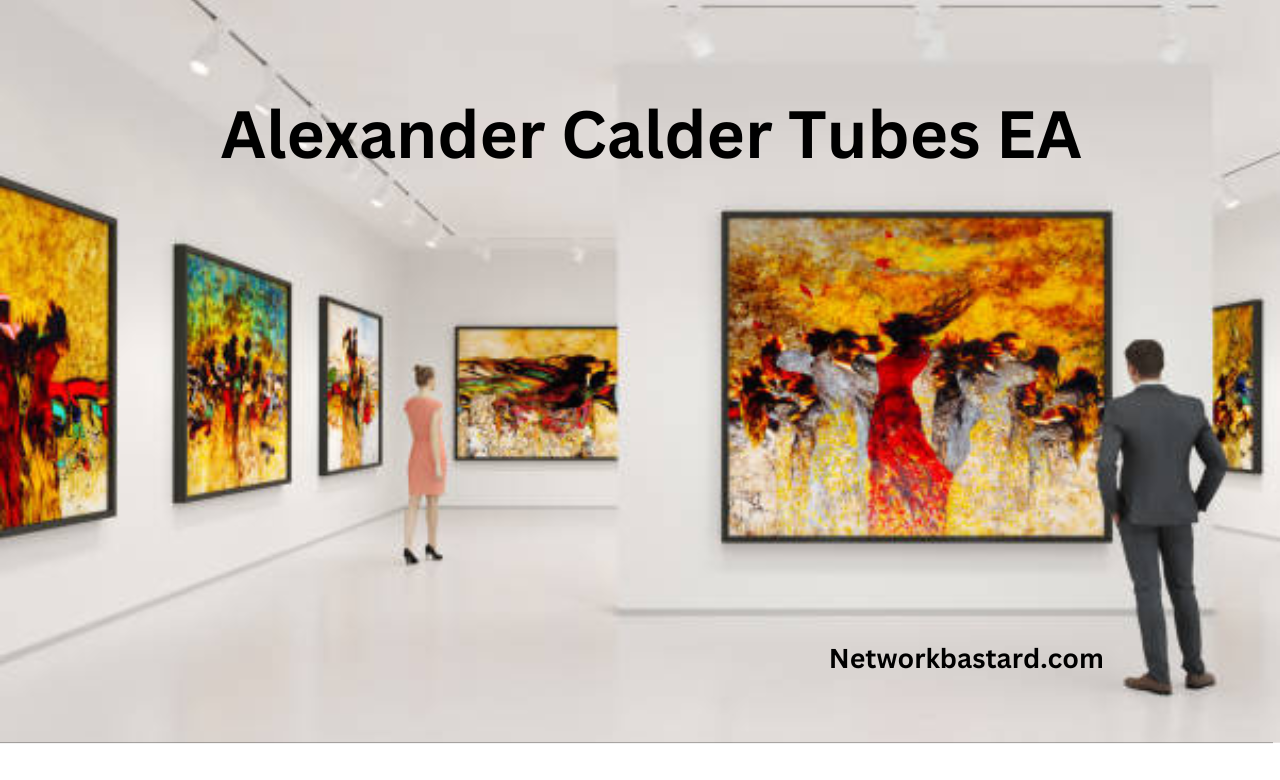Alexander Calder, one of the most influential artists of the 20th century, is renowned for his groundbreaking contributions to modern art, particularly his innovative mobiles and stabiles. Among his notable works is “Tubes E.A.”, a captivating piece that exemplifies Calder’s mastery of form, balance, and movement. This article delves into the significance of “Tubes E.A.”, its artistic elements, and answers frequently asked questions about this iconic artwork.
Who Was Alexander Calder?
Alexander Calder (1898–1976) was an American sculptor and artist best known for inventing the mobile—a type of kinetic sculpture that moves with air currents. His work bridges the gap between art and engineering, combining abstract shapes, bold colors, and precise balance. Calder’s influence extends beyond mobiles to include large-scale public sculptures, paintings, and jewelry design.
What is “Tubes E.A.”?
“Tubes E.A.” is a quintessential example of Calder’s mobiles, showcasing his signature use of abstract forms and dynamic movement. The piece features interconnected tubes and shapes suspended in perfect balance, creating a harmonious interplay of weight and space. The “E.A.” in the title stands for “Épreuve d’Artiste” (Artist’s Proof), indicating that it is a unique or limited-edition work.
The artwork is a testament to Calder’s ability to transform industrial materials like metal into delicate, poetic forms that seem to defy gravity. Its kinetic nature invites viewers to engage with the piece as it moves, offering a constantly changing visual experience.
Key Features of “Tubes E.A.”
- Kinetic Design: As with many of Calder’s mobiles, “Tubes E.A.” is designed to move, creating an ever-evolving display of shapes and shadows.
- Abstract Forms: The piece features geometric shapes and tubes arranged in a balanced composition, reflecting Calder’s fascination with abstraction.
- Industrial Materials: Calder often used metal and wire, materials associated with industry, to create delicate and elegant artworks.
- Balance and Precision: The mobile’s ability to move freely while maintaining balance demonstrates Calder’s engineering prowess and artistic vision.
FAQs About Alexander Calder’s “Tubes E.A.”
1. What does “E.A.” mean in the title?
- “E.A.” stands for “Épreuve d’Artiste” (Artist’s Proof), indicating that the piece is a unique or limited-edition work, often reserved for the artist or special collections.
2. What materials were used to create “Tubes E.A.”?
- Calder typically used metal, wire, and paint to create his mobiles. “Tubes E.A.” is likely made from similar materials, showcasing his ability to transform industrial elements into art.
3. How does the mobile move?
- The mobile is designed to move with air currents, creating a dynamic and ever-changing display. Its balanced construction allows it to rotate and sway gently.
4. Where can I see “Tubes E.A.”?
- Calder’s works, including “Tubes E.A.”, are displayed in major museums and galleries worldwide, such as the Museum of Modern Art (MoMA) in New York and the Calder Foundation.
5. What is the significance of Calder’s mobiles in art history?
- Calder’s mobiles revolutionized modern art by introducing movement as a key element of sculpture. They bridged the gap between art and engineering, influencing generations of artists.
6. Is “Tubes E.A.” available for purchase?
- Original Calder mobiles are highly sought after and often sold through prestigious auction houses or galleries. Limited-edition prints or smaller replicas may also be available.
Why is “Tubes E.A.” Important?
“Tubes E.A.” is a testament to Calder’s innovative spirit and his ability to merge art, science, and engineering. It represents a shift in how art is experienced—moving from static objects to dynamic, interactive pieces. The work continues to inspire artists and captivate audiences, solidifying Calder’s legacy as a pioneer of modern art.
Conclusion
Alexander Calder’s “Tubes E.A.” is more than just a sculpture; it’s a celebration of movement, balance, and creativity. As one of Calder’s iconic mobiles, it encapsulates his unique ability to transform simple materials into profound artistic statements. Whether you’re an art enthusiast or a casual observer, “Tubes E.A.” offers a mesmerizing glimpse into the mind of a true visionary.

